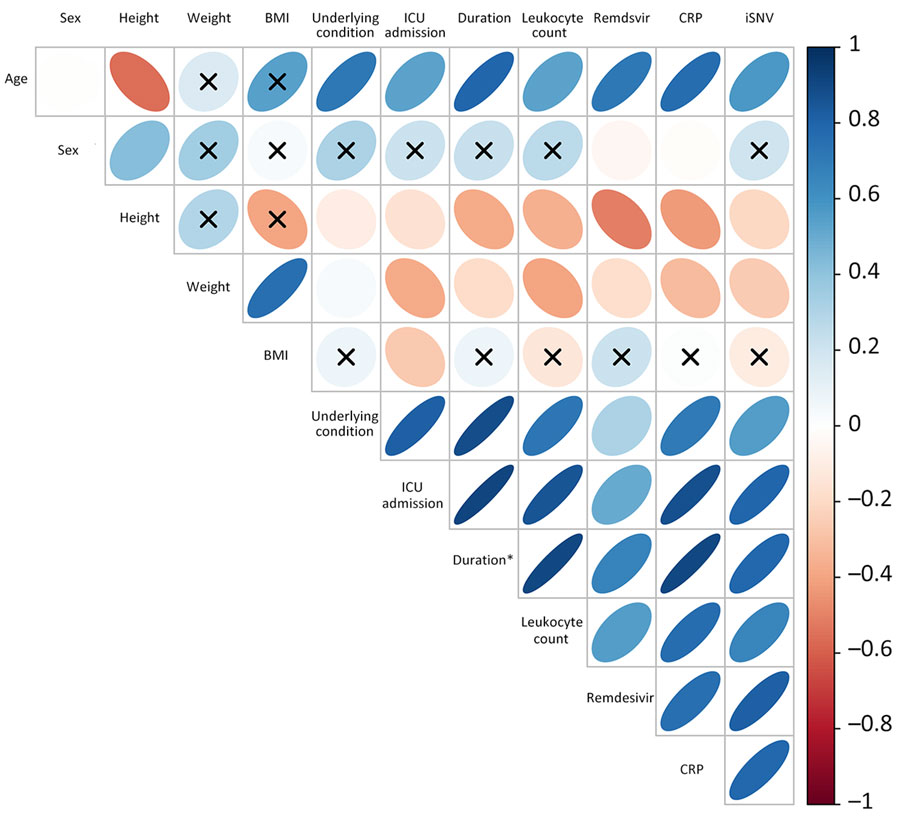Volume 31, Number 8—August 2025
Research
Rapid Emergence and Evolution of SARS-CoV-2 Intrahost Variants among COVID-19 Patients with Prolonged Infections, Singapore
Figure 7

Figure 7. Correlation between iSNVs and clinical parameters in study of rapid emergence and evolution of SARS-CoV-2 intrahost variants among COVID-19 patients with prolonged infections, Singapore. Correlation matrix illustrates the relationships between the number of iSNVs and various clinical variables. Asterisk denotes duration of infection. Colored gradient indicates the degree of pairwise correlation with respect to Pearson correlation coefficient. Blue ellipsoids represent positive associations between any pairwise variables; orange ellipsoids denote negative correlations; the darker and narrower blue ellipsoids indicate stronger positive correlations. Black X denotes correlations that are not statistically significant (p>0.05). BMI, body mass index; CRP, C-reactive protein; ICU, intensive care unit; iSNVs, intrahost-single nucleotide variants; remdes, remdesivir.